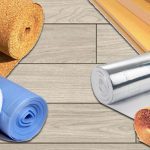Content
-
1 Top 3 materials for warm walls at home
- 1.1 Walls of timber and logs
- 1.2 Sandwich Panel Walls
Owners of country houses and cottages strive to make them as cozy and warm as possible. In order to keep the temperature optimal for a comfortable existence in the house in winter, you need to correctly approach the choice of materials for its walls.

Properly selected material must be environmentally friendly and have a high level of resistance to heat transfer. An important factor will be his ability to “breathe”, creating natural ventilation in the house.
Top 3 materials for warm walls at home
The first type is cellular concrete, which is divided into several subspecies having similar technical characteristics and made on the basis of ordinary concrete.

Varieties include:
- Expanded clay;
- Foam block;
- Gas block;
- Concrete mixed with polystyrene.
Any of these materials saves up to 3 times more heat than brick. Another advantage is that any derivatives of aerated concrete are resistant to open fire. Even in the event of a fire, they do not lose their original characteristics and are not covered by cracks.

To make such walls even warmer, it is recommended to additionally treat them with special compounds or cover them with facing materials. You can use decorative plaster, concrete paint, siding.
Walls of timber and logs
Timber and logs are energy-efficient natural materials that can retain heat in the house. In many respects, their thermal conductivity depends on the thickness and method of subsequent processing. A log retains heat better than a beam, but is offered at a higher price.

Materials must be additionally coated with special means. This will extend the life of the house and protect it from natural factors and insects.
Sandwich Panel Walls
This material is optimal for use in frame construction. Its energy efficiency is due to the presence of a heater located along the inner perimeter of the panels.

The cost directly depends on the quality and environmental friendliness of the insulation, the thickness of its layer and the visual characteristics of the external panels. The advantage of this structure is the ability to decorate its facade. Thanks to this, the building can imitate a real log, brick or stone house.
-
 What crushed stone can be hazardous to health?
What crushed stone can be hazardous to health?
-
 Why is mineral wool dangerous to health?
Why is mineral wool dangerous to health?
-
 What is the optimal thickness of the substrate for the laminate
What is the optimal thickness of the substrate for the laminate
-
 Where you can not apply glazing from soft PVC sheets
Where you can not apply glazing from soft PVC sheets
-
 Liquid wallpaper: advantages, application technology
Liquid wallpaper: advantages, application technology
-
 What type of sandwich panels is the best
What type of sandwich panels is the best
-
 Why acrylic plaster is better than other coatings
Why acrylic plaster is better than other coatings
-
 What material is better to replace drywall
What material is better to replace drywall
-
 What types of electrodes are best used for inverter welding
What types of electrodes are best used for inverter welding
-
 Gypsum 3D panels for walls: advantages and disadvantages
Gypsum 3D panels for walls: advantages and disadvantages
-
 Characterization and use of glassizol in modern construction
Characterization and use of glassizol in modern construction
-
 Types of balusters and their features
Types of balusters and their features
New publications are published daily on our channel in Yandex. Zen
Go to Yandex. Zen


